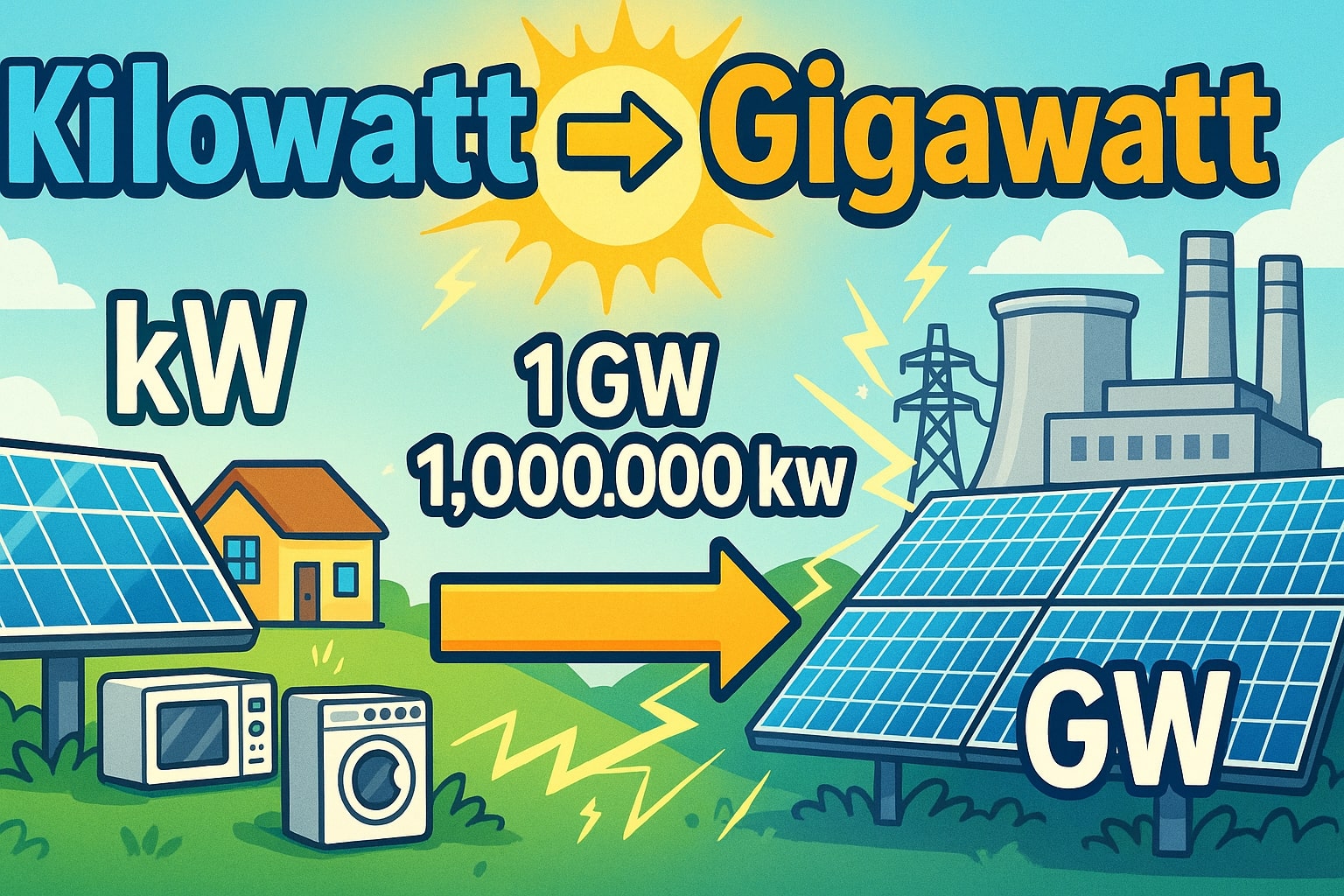kilowatt to gigawatt – How to convert kW to GW
The kilowatt (kW) is a familiar unit in homes, offices, and small industries, while the gigawatt (GW) describes massive energy production on the scale of national grids and mega projects. Converting kilowatt to gigawatt helps us compare the output of everyday appliances or local facilities with the world’s largest energy producers.

What is a kilowatt (kW)?
A kilowatt equals 1,000 watts. It’s commonly used for appliances, small businesses, and localized systems. For example, an electric oven may use 3 kW, and a small office may consume about 100 kW.
What is a gigawatt (GW)?
A gigawatt equals one billion watts (1,000,000,000 W). It’s typically used for nuclear power plants, hydroelectric dams, or massive renewable energy farms.
How to convert kilowatt to gigawatt
Gigawatt (GW) = Kilowatt (kW) ÷ 1,000,000
Example:
Gigawatt = 2,000,000 kW ÷ 1,000,000 = 2 GW
For quick results, try the Conversion Tools. Other useful calculators, such as the Speed Converter, are also available.
Do you know?
-
About kilowatt: A large supermarket consumes around 500 kW of electricity to power refrigeration, lighting, and heating systems.
-
About gigawatt: The Hoover Dam generates about 2 GW of power at peak output — equal to 2,000,000 kW.
The Solar Farm That Lit Up a Nation
In India, the Bhadla Solar Park is one of the world’s largest solar farms, with a capacity of 2.25 GW. To engineers planning the project, the numbers were first expressed in kilowatts to estimate how many solar panels would be needed. With each panel producing roughly 0.3 kW, it took millions of panels to reach gigawatt scale.
This conversion from kW to GW wasn’t just math — it was the foundation for turning sunlight into enough energy to power entire regions. It highlights how small units, multiplied millions of times, can create energy on a scale that transforms nations.

From Panels to Power Grids
The formula is simple: divide kilowatts by one million. Yet converting kilowatt to gigawatt connects rooftop solar panels to global energy grids. From a single household appliance to massive solar parks, this conversion shows how energy adds up — step by step, watt by watt, until it reaches gigawatts powering entire countries.

